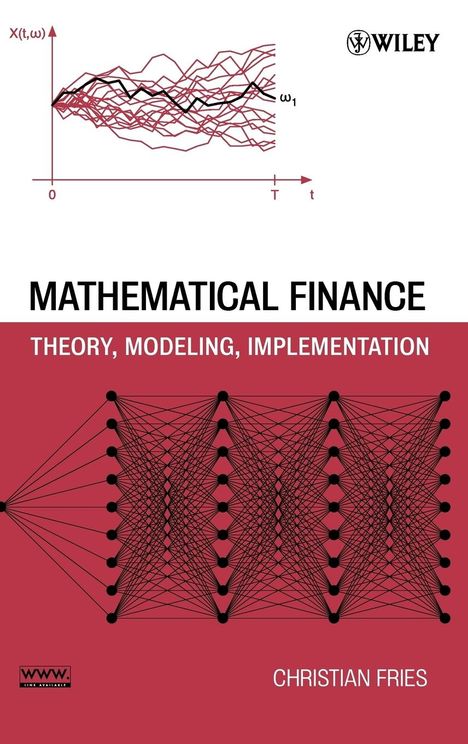Christian Fries: Mathematical Finance, Gebunden
Mathematical Finance
- Theory, Modeling, Implementation
(soweit verfügbar beim Lieferanten)
- Verlag:
- Wiley, 09/2007
- Einband:
- Gebunden, HC gerader Rücken kaschiert
- Sprache:
- Englisch
- ISBN-13:
- 9780470047224
- Artikelnummer:
- 2488789
- Umfang:
- 544 Seiten
- Copyright-Jahr:
- 2007
- Gewicht:
- 977 g
- Maße:
- 240 x 161 mm
- Stärke:
- 33 mm
- Erscheinungstermin:
- 1.9.2007
- Hinweis
-
Achtung: Artikel ist nicht in deutscher Sprache!
Klappentext
A balanced introduction to the theoretical foundations and real-world applications of mathematical finance
The ever-growing use of derivative products makes it essential for financial industry practitioners to have a solid understanding of derivative pricing. To cope with the growing complexity, narrowing margins, and shortening life-cycle of the individual derivative product, an efficient, yet modular, implementation of the pricing algorithms is necessary. Mathematical Finance is the first book to harmonize the theory, modeling, and implementation of today's most prevalent pricing models under one convenient cover. Building a bridge from academia to practice, this self-contained text applies theoretical concepts to real-world examples and introduces state-of-the-art, object-oriented programming techniques that equip the reader with the conceptual and illustrative tools needed to understand and develop successful derivative pricing models.
Utilizing almost twenty years of academic and industry experience, the author discusses the mathematical concepts that are the foundation of commonly used derivative pricing models, and insightful Motivation and Interpretation sections for each concept are presented to further illustrate the relationship between theory and practice. In-depth coverage of the common characteristics found amongst successful pricing models are provided in addition to key techniques and tips for the construction of these models. The opportunity to interactively explore the book's principal ideas and methodologies is made possible via a related Web site that features interactive Java experiments and exercises.
While a high standard of mathematical precision is retained, Mathematical Finance emphasizes practical motivations, interpretations, and results and is an excellent textbook for students in mathematical finance, computational finance, and derivative pricing courses at the upper undergraduate or beginning graduate level. It also serves as a valuable reference for professionals in the banking, insurance, and asset management industries.
Biografie
Christian Fries ist Schauspieler und Regisseur, er arbeitet freischaffend an Stadttheatern und in der Freien Szene. Er schreibt Kurzgeschichten, Romane und theoretische Texte zu den Themen »Bewusstsein« und »Kontakt«< Er ist klassisch ausgebildeter Musiker (Klavier), gibt Konzerte in ungewöhnlichen Formaten (»Bach üben! «) und komponiert Musik für Bühnenprojekte. 2010 wurde er zum Ingeborg-Bachmann-Wettbewerb eingeladen und mit seinem Text »Hutmacher, privat« in die Short List gewählt. (Der Text ist in der Piper-Dokument< ion »Klagenfurt / Die Besten 2010« veröffentlicht.) Im selben Jahr erschien im Helmut Lang Verlag Münster der Band »Vater gibt seinen Weinhandel auf« mit szenischen Texten, Erzählungen und dem Kurzroman »Adoption«. 2015 erhielt er ein Arbeitsstipendium des Hessischen Literaturrats (Aufenthalt in Litauen). Er erprobt das Format »Öffentliches Schreiben«.

